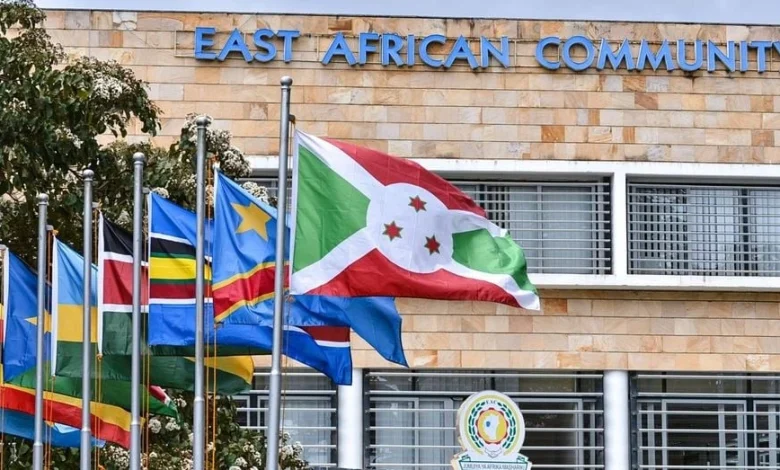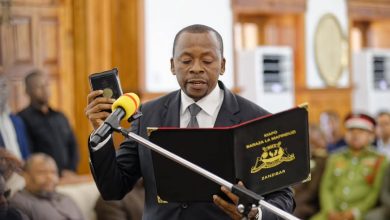Analysts back EAC’s 2025 growth, call for value-added exports

Analysts back EAC’s 2025 growth, call for value-added exports
NAIROBI, KENYA: ANALYSTS are optimistic that the East African Community (EAC) will achieve its projected real GDP growth of 5.8 per cent and continue to experience moderate inflation in 2025.
However, they stressed the need to increase exports of value-added products, promote entrepreneurship among citizens and strengthen regional peace.
They noted that boosting exports of valueadded goods would enhance the value of EAC member states’ currencies against the US dollar, thereby improving their performance in international trade.
The experts were reacting on the recent 28th Ordinary Meeting of the East African Community’s Monetary Affairs Committee (MAC), held in Nairobi, Kenya.
During the meeting, central bank governors from the region projected continued moderation in inflation and reaffirmed the 5.8 per cent real GDP growth target for 2025.
Business Analyst, Dr Sylvester Jotta based at the Saint Augustine University of Tanzania (SAUT) urged East African countries to encourage export of value-added products rather than continuing importing finished goods from abroad at the expense of their struggling currencies.
“Stability of our currencies depends on the degree to which we export value added products” Dr Jotta told the Daily News yesterday.
He said enough export will enable the member states, including Tanzania to generate more foreign currencies for use in international trade and attain Balance of Payment (BoP).
Dr Jotta requested EAC’s heads of state and government to continue harmonising regional payment systems in efforts of boosting trade volume among partner states in the region.
In another development, he commended the government of Tanzania under President Samia Suluhu Hassan for being pro-business through creation of favourable environment for investors.
ALSO READ: Tanzania leads East Africa in Global Peace Index 2024
Economist cum Investment Banker, Dr Hildebrand Shayo said moderate inflation rate combined with real GDP growth of 5.8 per cent is generally a positive sign for East Africa’s economic performance.
Dr Shayo said Real GDP growth of 5.8 per cent indicates economic expansion, reflecting strong yet sustainable growth as EAC is advancing at a healthy pace.
“This level of growth surpasses the global average, signalling increased investment especially in infrastructure, services and manufacturing, rising consumer demand and enhanced regional trade integration within the EAC bloc,” Dr Shayo said.
He expounded that moderate inflation growth typically ranging between 3 to7 per cent is considered healthy, meaning prices are rising at a manageable rate, encouraging consumption and investment.
“The cost of living is increasing, but not rapidly enough to significantly erode purchasing power,” he said.
He said the move allows central banks to maintain relatively stable interest rates, supporting access to credit.
“For countries like Tanzania, Kenya, Rwanda and Uganda, moderate inflation helps sustain macroeconomic stability, confidence in the exchange rate and investor interest, particularly in sectors such as energy, manufacturing and fintech,” Dr Shayo said.
For her part, Regional Diplomacy Analyst, Ms Careen Ndika underlined the importance of EAC’s countries to ensure funds allocated for their financial year’s budgets are spent effectively for development projects and citizens’ prosperity at large.
She urged countries to fund only development priority areas, including agriculture while supporting youth with essential skills to level up their entrepreneurship literacy so as to open up businesses, widening tax base and creating jobs.
ALSO READ: EAC approves establishment of health centres of excellence in Tanzania
During the meeting, EAC’s central bank governors projected that inflation across partner states in 2025 is expected to continue moderating with the economic growth of 5.8 per cent real GDP albeit alerted on possible threats from the persisting global trade tensions and climate change effects, including extreme weather like floods and drought.
Their projects come as the regional bloc in 2024 recorded decline of inflation to nine per cent from 11.2 per cent in 2023.
According to the communiqué meeting, the governors attributed such impressive trend of the inflation to the impact of sound monetary measures, improved food supply among partner states and easing to global commodity prices.
Furthermore, they observed the strong outlook for the EAC’s economies with real GDP projected at 5.8 per cent in 2025, which is higher than projected growth globally and in the Sub-Saharan African.
Findings show that in 2024, the EAC posted an astounding 5.4 per cent economic growth.
In a related development, governors reviewed progress made in the implementation of the roadmap toward realisation of the East Africa Monetary Union (EAMU) by 2031.





